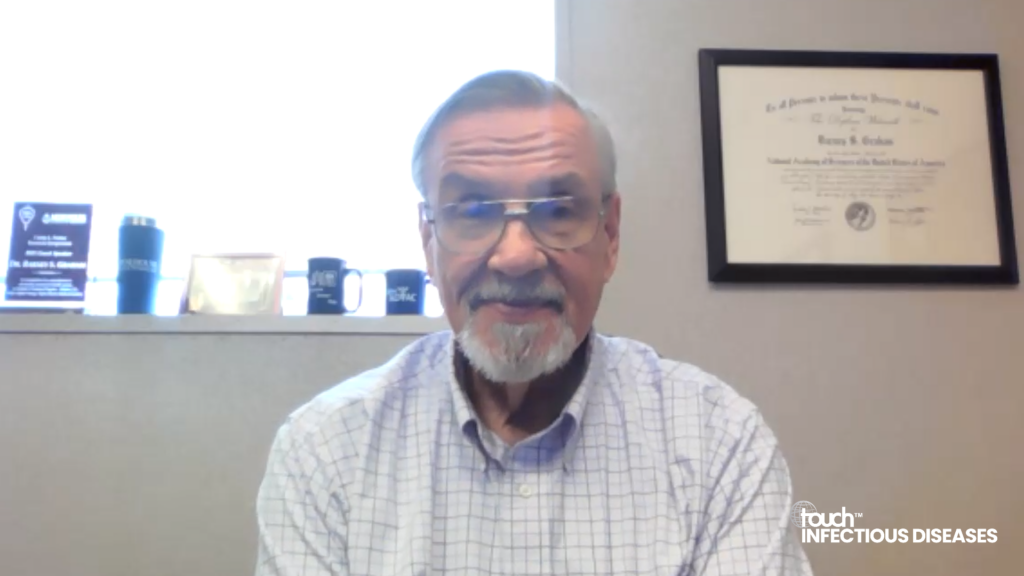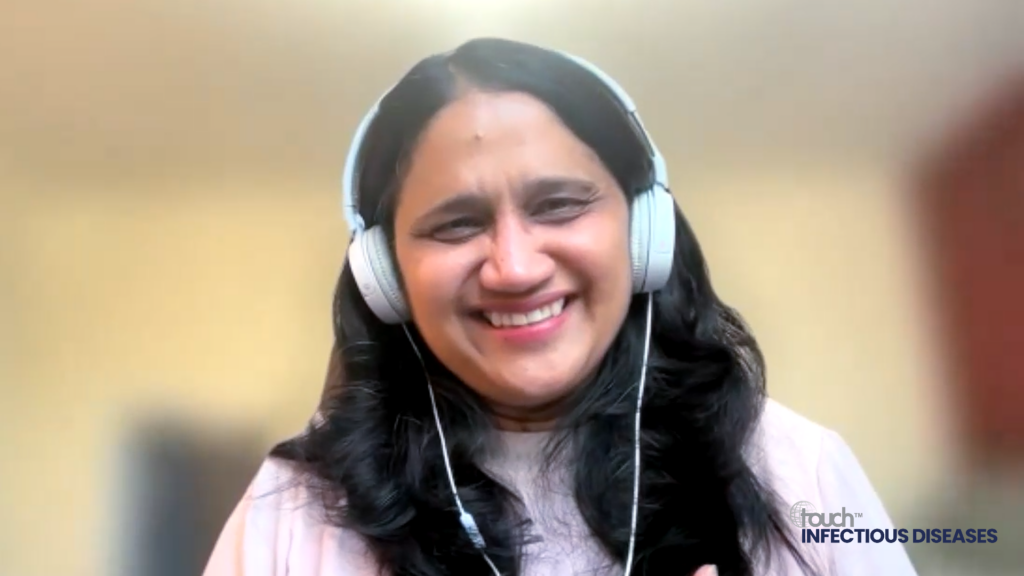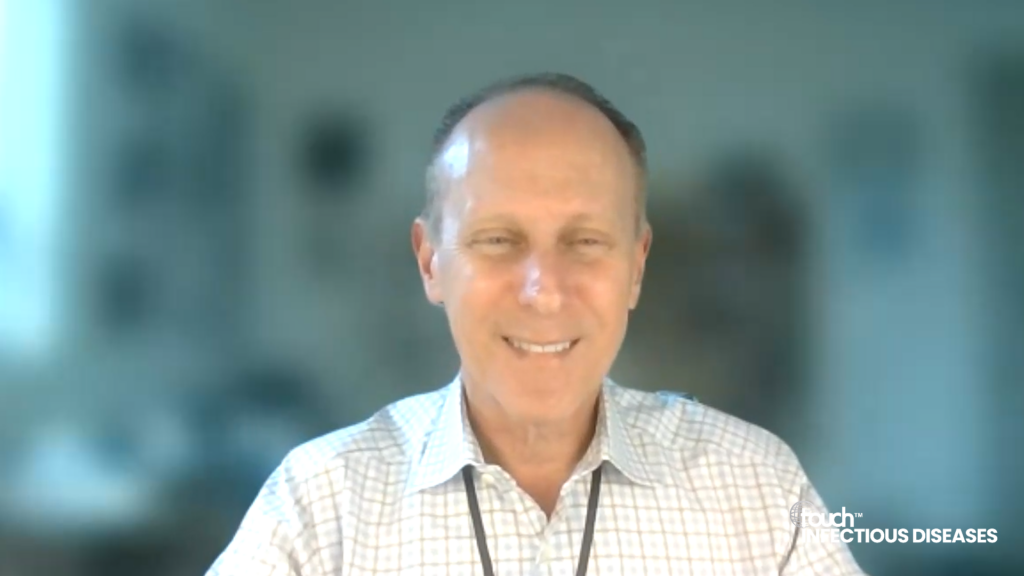Preliminary results of the RIO phase II study (NCT04319367) were presented by Dr Sarah Fidler (Professor of Medicine, Imperial College London, UK) at the 2025 Conference of Retroviruses and Opportunistic Infections (CROI). RIO explores whether broadly neutralising antibodies (bNAbs) can control HIV without the need for daily antiretroviral therapy (ART). Conducted with extraordinary dedication from participants, the trial tested the efficacy and safety of pausing conventional ART to assess whether bNAbs could maintain viral suppression. This randomized, placebo-controlled, phase II study revealed that 75% of participants remained virally suppressed for 20 weeks, shedding light on the potential for immune-based remission. With careful monitoring and holistic support, the study offers hope for more sustainable and empowering treatment options for people living with HIV. The study is ongoing, with an additional Arm C looking at how best to use these antibodies.
Q1. Can you summarize the RIO study design, methodology and selection criteria for participants? (00:10)
Q2. The trial required participants to stop ART – what safety measures were in place to manage potential risks? (3:25)
Q3. Your findings show that 75% of participants on bNAbs maintained viral control for 20 weeks. Were there differences in responses among participants, and if so, what factors might explain these variations? (5:49)
Q4. What are the key take-aways from the results so far? (7:53)
Q5. As the study is ongoing, what are the next steps, and what can we expect from the upcoming Arm C? (10.38)
Catch up: A new chapter in HIV research: Dr Sarah Fidler on the promise of harnessing immunity with broadly neutralising antibodies
Transcript
Q1. Can you summarize the RIO phase II study design, methodology and selection criteria for participants?
So whenever you do a trial of a completely new different type of treatment, usually they’re tested in experiments in a laboratory first and then in an animal model, and then they do what’s called phase I or first-in-human to check for safety, finding the right dose. And the broadly neutralizing antibodies we’ve been using in RIO have had all of that done. They look pretty safe, and there’s some very interesting findings from both animal models of HIV and also from some incredibly courageous people who’ve already had these medicines, to find the right dose and see how how it works.
So RIO is called a phase II trial as we’ve got this information. We know what dose we want to use, and we’re pretty sure they’re safe. But safety, of course, is one of the most important and first things we’re looking at. But what we’re now testing in these sort of studies is: does it actually work? And is it better than either not having anything (and that’s called a placebo), or is it better than the current medicines we’ve got all by itself?
So the RIO study is designed in what scientifically is probably the most rigorous or technical way, which is a randomized trial. So we don’t choose which people have the antibodies or what’s called a placebo, which in this case was just some saline. A computer selects somebody and that means that if we see a result, there is no bias. We didn’t choose that all the good people would go into the antibody arm and the other people wouldn’t.
So that’s one aspect of the design of the trial. The other aspect of the design of the trial is we ask people who are living with HIV who are stable on treatment with no virus in their blood called undetectable to stop their antiretroviral medicines, because that’s the question we want to know. Are these drugs, the antibodies, as good as our standard antiretroviral therapy? And to do that is an enormous ask of our participants. They have to come back at least every week to measure a blood test to see if the virus has come back because we don’t have any other way of checking or knowing. People feel well, so they can’t tell if the virus has come back. They don’t have any symptoms.
And, obviously, at some point, if virus does come back, that potentially puts their risk health at risk and their partners potentially at risk of transmission. So we have to be very, very careful that as soon as we see virus, we very carefully monitor them. We put them back onto their normal medicine straight away, and we offer their partners, if they wish to have this, something called PrEP, which is a type of medicine that protects people who don’t have HIV from acquiring it. So there were many aspects of this study that had to be put in place to make sure that we could ask people to stop their medicines and do that safely.
And then we measured between the two study arms, whether people who’d had the antibodies compared to just saline or nothing, how long did it take before virus would come back? And that would tell us if these drugs do what we hope they did, which is to harness our own immune system to control the virus.
Q2. The trial required participants to stop ART – what safety measures were in place to manage potential risks?
It’s actually a very big ask. So people living with HIV, it is still a very stigmatized condition. It’s not an easy thing for people to talk about. And, obviously, if you’re having a relationship with somebody, you need to have that conversation.
What has happened, which has been one of the most extraordinary, kind of breakthroughs in the world of HIV, is that people who are taking their medicines and have what we call an undetectable level of virus in their blood cannot transmit virus to partners or infants. And that has absolutely revolutionized, you know, relationships and lives to people with living with HIV.
And we are asking people to do something which is completely different from that, which is we are asking them to stop their medicines.
Now, of course, if we knew these antibodies worked, we could turn this into what’s called a ‘switch study’. We could just say you were on medicines, and now you’re having a different type of treatment. But we don’t know that works in that way, and that’s what we’re testing here. So we have to ask people to discuss their status with their partners, to discuss what we call safe sex using condoms, their partner’s taking something called PrEP, which I’ve just mentioned, and their partners testing for HIV, and that makes them have a conversation that is very challenging sometimes.
There’s also, obviously, the emotional aspect of having to revisit your HIV status. Many people living with HIV have had a really challenging time coming to terms with that. How they acquired HIV may have been particularly challenging for them. And so as part of the study, in addition to the practical measures I’ve mentioned, we have been able to access, free immediate sort of counseling and therapy for people, specifically around relationships, HIV and being in a study. It has obviously brought up many complicated things for people, so that is another really important aspect of this. And one of the pieces of the work we’re doing with this study is what’s called a qualitative study, where we ask people and learn from them what have been their experiences of going through this kind of protocol and how have they found it, because it can help us to design these kind of studies better.
Q3. Your findings show that 75% of participants on bNAbs maintained viral control for 20 weeks. Were there differences in responses among participants, and if so, what factors might explain these variations?
So thanks for going to the results. So the main finding we were looking for is at week 20, so that’s after you’ve stopped your medicines, is the viral load in the blood still undetectable or not?
And for the vast majority of people living with HIV, when they stop their antiretroviral therapy, virus comes back. And it comes back really quite quickly, usually within about two to four weeks. And we know that from other analysis that our group and others have done.
So the people who received the placebo, we anticipated this was going to happen. The people who received the bNAbs, that’s what we’re comparing it to. Is it better than two-four weeks for most people? And what you mentioned is that 3/4 of the people who had the antibodies were still off their antiretroviral medicines with virus below the limit of detection in their blood at week 20.
So clearly, that means for 1/4 of those people, actually, the virus did come back. So that means that the bNAbs we have used don’t work 100% effectively in everybody. And so our next question is kind of why? Why did it work in most people but not everybody? And I think we don’t have the complete set of scientific answers to that as yet. But these antibodies bind to a particular bit of the protein of the HIV virus. And what we think in some of the people that they didn’t work is that the strain of the HIV virus that they particularly happen to live with, is not the quite the right match for the antibodies we used.
But we have got some more science to look at to explore exactly why that happened. Because certainly in four of the eight people where the antibodies didn’t work quite so well, we have found that they had some sort of changes in the virus that that would explain this, but that’s not the case for everybody so far.
Q5. What are the key take-aways from the results so far?
I think the main takeaway is that we have had the most extraordinary commitment and inspiration from the people who’ve been enrolled into this study. I mean, it really has been quite an ask. People are still carrying on in their follow-up because we’ve seen some really exciting and interesting results that people are still off their therapy over a year later, some longer than that. So people have been coming to see us now every other week or every week for the last year, year and a half. Some people have been in the study for about two or three years. So amazing commitment.
I think importantly, it reflects that for many people within the community of people living with HIV and particularly right now, where challenges to access reliable, safe antiretroviral therapy for the rest of your life is uncertain, there is an enormous commitment to looking at alternative approaches to just saying how could we treat this. I would love to say that these antibodies may lead towards a cure. I think at best, being careful of the wording here, these antibodies may lead to some form of remission for some people. As in, if you look hard enough, you can probably still find the virus.
But if they remain fit and healthy and their immune system works, then certainly one or two doses of having these antibodies seems to do an extremely good job. And it’s probably one of the first times we’ve been able to show that changing how your immune system works has actually been able to help control a virus infection. Now we do use antibodies for other virus infections and there were antibody treatments when people had COVID, if you remember. There are certain antibody treatments to prevent babies getting a a virus infection called RSV.
So this is not the first time it’s been used in infectious diseases, but it’s one of the first studies that has shown with the design I explained. So beyond doubt, really, there’s there’s not a bias in our result because we were blinded and it was randomized, that these antibodies really do seem to work for the majority of people. And, obviously, our next steps are how do we get it even better? How do we get that seventy five percent to a hundred percent?
In the RIO trial, we used two antibodies, which bind to two different bits of the virus, particle. But maybe we need to add a third one in and that would on those people where these two antibodies perhaps don’t bind quite as well as they need to.
So there’s there’s more exploration to do, but I think it’s it’s a really interesting observation that, actually, without doubt, these antibodies are really certainly doing something to train the immune system, if you like, to control the virus all by itself.
Q6. As the study is ongoing, what are the next steps, and what can we expect from the upcoming Arm C?
So, we are also looking at how best to use these antibodies. The first part of the results that we presented last month at the conference have identified people who were living with HIV on treatment with an undetectable viral load, then they get the antibodies. So when they receive the antibodies, there is no virus in the blood. And there is a question from some other studies that we’ve learned that one option is to try and get rid of those sleeping cells that are the burden and the barrier to why we can’t cure HIV.
It might be that we allow them to wake up a little bit and that would mean that people stop their medicines. Virus comes back, and then you give the antibodies with the with the reasoning behind that, that the antibodies might bind to cells that are expressing virus, which are the very cells we want to get rid of. And so we’ve got another arm of the RIO trial, which is looking at exactly that. So people stop their medicines first, virus comes back, they restart medicines and and have the antibodies in that context.
And and that’s what Arm C is going to look at. How do we use these? So it’s a strategic look at how we might use these antibodies to have a better effect than we’ve already found with the current approach. And the beauty of doing it in this way is that we will be able to compare and say, well, when we did it when people were undetectable in their blood and they got antibodies, this is what we found.
And now we’re going to be able to see what if we let virus come back in a little, just for a short period of time in a very carefully controlled way and then give antibodies. Does that work better at flushing out these reservoir cells?
Interviewer/Editor: Sophie Nickelson
Disclosures: Sarah Fidler has no financial or non-financial conflicts of interest to declare in relation to this video.
This content has been developed independently by Touch Medical Media for touchINFECTIOUS DISEASES and is not affiliated with the Conference of Retroviruses and Opportunistic Infections (CROI). Unapproved products or unapproved uses of approved products may be discussed by the faculty; these situations may reflect the approval status in one or more jurisdictions. No endorsement of unapproved products or unapproved uses is either made or implied by mention of these products or uses by Touch Medical Media or any sponsor. Views expressed are the speaker’s own and do not necessarily reflect the views of Touch Medical Media.
Cite: A new chapter in HIV research: Dr Sarah Fidler on the promise of harnessing immunity with broadly neutralising antibodies. touchINFECTIOUSDISEASES. May 20th, 2024.
SIGN UP to touchINFECTIOUS DISEASES!
Join our global community today for access to thousands of peer-reviewed articles, expert insights, and learn-on-the-go education across 150+ specialties, plus concise email updates and newsletters so you never miss out.









